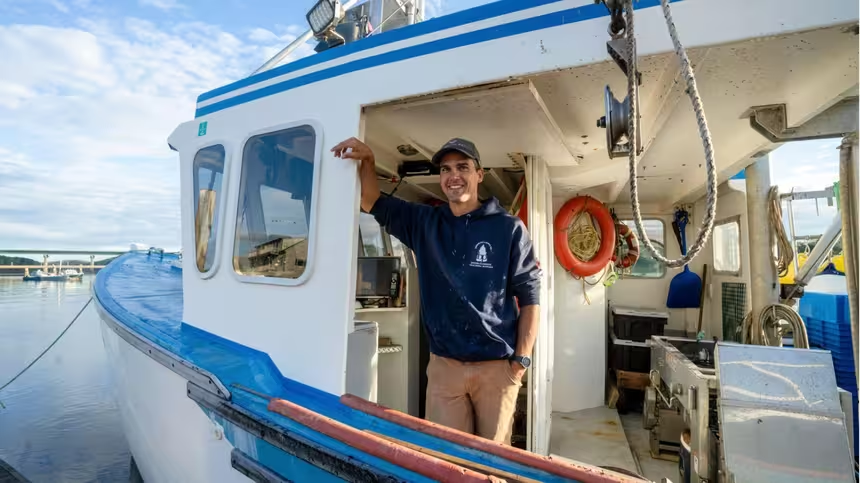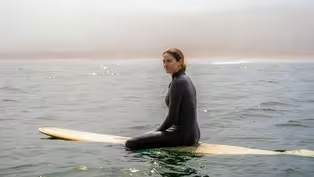
Shailene Woodley Visits an Abalone Farm
Clip: Episode 3 | 5m 16sVideo has Closed Captions
Shailene discovers how abalone and purple sea urchin are being sustainably harvested.
Shailene Woodley pays a visit to The Cultured Abalone Farm where she meets with General Manager and Partner Doug Bush to learn about their harvesting process. While at the farm, Shailene learns how abalone and purple sea urchin are raised as well as how the team supplies local kelp to feed both seafood species.
Problems playing video? | Closed Captioning Feedback
Problems playing video? | Closed Captioning Feedback

Shailene Woodley Visits an Abalone Farm
Clip: Episode 3 | 5m 16sVideo has Closed Captions
Shailene Woodley pays a visit to The Cultured Abalone Farm where she meets with General Manager and Partner Doug Bush to learn about their harvesting process. While at the farm, Shailene learns how abalone and purple sea urchin are raised as well as how the team supplies local kelp to feed both seafood species.
Problems playing video? | Closed Captioning Feedback
How to Watch Hope in the Water
Hope in the Water is available to stream on pbs.org and the free PBS App, available on iPhone, Apple TV, Android TV, Android smartphones, Amazon Fire TV, Amazon Fire Tablet, Roku, Samsung Smart TV, and Vizio.
Buy Now

What is Aquaculture?
The new three-part series “Hope in the Water” explores the groundbreaking work of dedicated fishers, aqua farmers, and scientists who are attempting what was once thought impossible: harvesting aquatic species to feed our growing planet while saving our oceans.Providing Support for PBS.org
Learn Moreabout PBS online sponsorship♪ Bush: So, this is Dos Pueblos Canyon.
It's got such an amazing history.
I mean, people have lived here for 14-, 15,000 years.
I'm the general manager and partner of The Cultured Abalone Farm.
We're a small abalone farm, dabbling in seaweeds and purple sea urchins.
Woodley, voice-over: Honestly, what I've known about abalone is they have beautiful shells, they've been a massive source of food in California for a long, long time, um...and that's it.
Oh!
Oh, my God.
And this approach is, like, what the old abalone fishery used to be like, right?
It's a snail, it's a big, old snail, it's a big marine snail.
It's not that different than a garden snail.
Wow.
Bush, voice-over: But, in this case, instead of eating lettuces or your herbs, it eats seaweed.
[Machine whirring] So, that's about a 1,500- pound bag of seaweed.
We've become, you know, really familiar with feeding seaweeds to abalone.
That's also what urchins eat.
And if we just bring those in and feed them kelp the same way that we're doing with our abalone, we should be able to develop that roe and make them into a premium seafood product really, really quickly.
And spoiler alert--turns out, it works really well.
There's two seaweeds that they grow on-site... and then, there's one seaweed that they wild harvest from the oceans, but they do it in a way that's very sustainable.
Bush, voice-over: We just give it a haircut.
We're just trimming the stuff off the top of a kelp canopy so their ability to create future kelp plants are not in any way altered by our harvesting.
[Machine whirring] Woodley, voice-over: Each net carries 1,500 pounds of this kelp and they have between 7, 8 bags of it.
Um, so, you do the math, that's a [beep] ton of pounds of kelp.
♪ Bush, voice-over: We're a very hands in the bucket kind of a farm.
We started this idea with a tank and with some purple urchins and let's see if we can do it.
Woodley, voice-over: I probably put between 25 and 50 pounds of the stuff in each tank... ♪ and in 3 days, these urchins go through it.
♪ Bush, voice-over: 10 to 12 weeks, we went from an empty urchin to an urchin which is absolutely just stuffed... with--not only stuffed with roe but stuffed with roe which was just, just delightfully good.
That's a remarkable difference.
All right, so, you have to have a small piece.
Here's some eggy uni.
Ha!
Eggy uni.
Oh, my--it's so good.
It's like the sweetness, right?
It's so sweet.
Yeah, you don't expect it.
Woodley, voice-over: It is sort of this really delicious, buttery, creamy sweetness.
I didn't expect it.
It completely threw me how much I enjoyed it.
Little brininess It's like a froot loop.
and a tiny, little mineral hit.
These are urchins that come straight from the reef, and we're using these seaweeds that come straight from this local system, and we're just trying to concoct something that's special and carries that little hit of ocean magic.
That wasn't a little hit.
That was like a, hey, you just went to Disneyland in one bite kind of hit.
Ha ha ha!
Bush, voice-over: It's one of those rare things where the idea tracks with the result, you know, like, very, very quickly.
It definitely doesn't always happen this way.
♪ I've referred to myself a bit as a recovering environmentalist.
No food is free.
We all eat something and that something comes from somewhere and it all has an impact associated with it.
♪ So, we have to get away from the scorecard against, like, a magical, fictional future and start scorecarding it against the actual alternatives that are in front of us.
[Water sloshing]
Video has Closed Captions
Preview: Ep3 | 30s | Creative approaches to diversifying our seafood diets are rewriting menus worldwide. (30s)
Providing Support for PBS.org
Learn Moreabout PBS online sponsorship
- Science and Nature

Explore scientific discoveries on television's most acclaimed science documentary series.

- Science and Nature

Capturing the splendor of the natural world, from the African plains to the Antarctic ice.












Support for PBS provided by:
